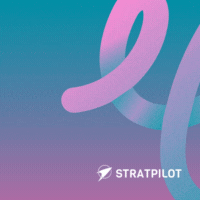As we enter 2026, organisations are becoming increasingly aware of the importance of employee wellbeing, workplace safety, and long-term workforce sustainability. Rising compliance requirements, expanding hybrid work models, and growing expectations from employees mean businesses can no longer rely on outdated manual processes to assess and maintain health standards. Modern workplaces demand real-time insights, proactive monitoring, and early risk detection, capabilities that traditional tools struggle to deliver. This is where AI in Occupational Health is rapidly transforming how companies protect, support, and empower their employees while meeting regulatory expectations with confidence.
Today, businesses of all sizes, from manufacturing and logistics to corporate offices, are turning to AI systems that can evaluate risks, predict issues, and assist decision-makers with data-backed recommendations. By integrating intelligent technology into their occupational health strategies, organisations are not only reducing workplace incidents but also improving productivity and creating a healthier, safer environment for every employee.
What is AI in Occupational Health?
AI in Occupational Health refers to the use of artificial intelligence technologies such as machine learning, predictive analytics, natural language processing, and computer vision to improve workplace health and safety processes. Rather than relying solely on reactive measures, businesses can identify risks earlier, monitor employee wellbeing in real time, and enhance compliance reporting. These systems analyse thousands of data points, from environmental conditions and wearable devices to incident logs and employee feedback, to provide meaningful insights that traditional monitoring methods cannot match.
By applying AI in Occupational Health solutions, organisations move from manual assessments and delayed responses to a proactive approach where potential hazards, health trends, and stress indicators are detected before they develop into critical issues. This shift not only supports better employee health outcomes but also helps businesses operate more efficiently while reducing long-term risks and costs.
Use Cases of AI in Occupational Health
1. Predicting Workplace Injuries and Health Risks
AI algorithms analyse historical data, sensor readings, and behavioural patterns to identify employees who may be at risk of injuries or health concerns. Businesses can intervene early with training, workload adjustments, or medical support.
2. Monitoring Employee Stress and Mental Well-being
Using AI-powered sentiment analysis from surveys, check-ins, and communication tools, organisations can track stress patterns, detect burnout risks, and provide well-being support before employee health deteriorates.
3. Real-Time Hazard Detection Through Smart Sensors
AI systems connected to cameras and sensors can detect immediate threats, such as unsafe movements, chemical exposure, or machinery malfunctions, allowing businesses to react instantly and prevent accidents.
4. Improved Employee Health Screening and Assessments
Instead of manual data entry and traditional health screenings, AI tools streamline medical assessments, identify hidden risks, and help health teams create personalised employee health plans.
Benefits of AI in Occupational Health
1. Enhanced Workplace Safety
By identifying risks earlier and providing real-time alerts, AI reduces the likelihood of workplace accidents and helps organisations maintain safe environments for employees.
2. Better Decision-Making with Data-Backed Insights
AI tools consolidate complex data into clear insights, enabling health and safety teams to prioritise actions based on evidence rather than assumptions, improving overall decision accuracy.
3. Stronger Compliance and Reporting
AI generates accurate, timely, and complete compliance reports, ensuring organisations remain aligned with regional and international health and safety standards.
4. Early Detection of Health Issues
AI systems can flag early signs of fatigue, musculoskeletal issues, or environmental health risks, empowering organisations to act in advance and support long-term employee wellbeing.
Why Businesses Struggle Without Modern Occupational Health AI
Many organisations still rely on outdated occupational health practices that are reactive rather than proactive. Without the capabilities offered by AI in Occupational Health, businesses often face several challenges:
1. Limited Visibility Into Real-Time Workplace Risks
Traditional health and safety assessments are conducted periodically, leaving long gaps where potential risks go unnoticed. Without continuous monitoring, incidents occur before they can be prevented.
2. Reactive Health Management Instead of Predictive Support
Businesses often identify health issues only after symptoms appear or accidents happen. This leads to increased sick leave, reduced productivity, and higher long-term healthcare costs.
3. Slow and Inaccurate Reporting
Manual documentation takes time and increases the possibility of errors. Companies without AI-driven systems struggle to maintain accurate compliance records, exposing them to regulatory risks.
4. Difficulty Managing Large and Complex Workforces
Whether managing remote teams, shift workers, or on-site employees, businesses without AI find it challenging to track individual health trends, workplace hazards, and environmental conditions effectively.
5. Higher Operational Costs
Reactive safety management often leads to expensive incident investigations, compensation claims, and extended downtime. AI helps reduce these costs, but without it, organisations continue facing efficiency gaps.
How Stratpilot Supports Smarter Occupational Health Management
Stratpilot provides businesses with advanced AI-driven tools designed to make health and safety management more predictive, organised, and insight-driven. While many platforms offer generic AI features, Stratpilot focuses on giving teams structured workflows, intelligent analysis, and practical support that fit seamlessly into daily operations.
Using Stratpilot, organisations can easily:
1. Organise and streamline workplace safety documentation
2. Generate AI-powered assessments, reports, and action plans
3. Use intelligent prompts to analyse risks or summarise incident logs
4. Create structured health checklists, audit templates, and wellbeing plans
Stratpilot’s AI capabilities act as a smart assistant for health and safety professionals, helping them cut down manual effort, improve accuracy, and develop more proactive strategies. With its focus on clarity, productivity, and actionable insights, Stratpilot becomes a valuable companion for organisations aiming to strengthen their AI in Occupational Health strategies.
Request a demo for Stratpilot today
Experience how Stratpilot can simplify occupational health management, enhance safety workflows, and help your organisation take a proactive approach to workplace wellbeing. Request a demo today and see Stratpilot in action.
Frequently Asked Questions (FAQs)
1. How does AI improve workplace health monitoring?
AI analyses health data, feedback, environmental conditions, and behavioural patterns to detect early signs of risks and provide actionable insights for better decision-making.
2. Can AI help reduce workplace injuries?
Yes. AI uses predictive analytics to identify employees or tasks that may be prone to injuries, helping organisations implement preventative measures before incidents happen.
3. Is AI suitable for both small and large organisations?
Absolutely. AI tools can scale according to the size of the workforce and the complexity of the workplace environment, making them suitable for SMEs as well as large enterprises.
4. Are AI-driven occupational health insights accurate?
AI systems improve accuracy by analysing large datasets, reducing human error, and providing consistent interpretations of trends and patterns.
5. Does AI replace occupational health professionals?
No. AI supports professionals by providing them with deeper insights, faster analysis, and better tools, it does not replace human judgement or expertise.





